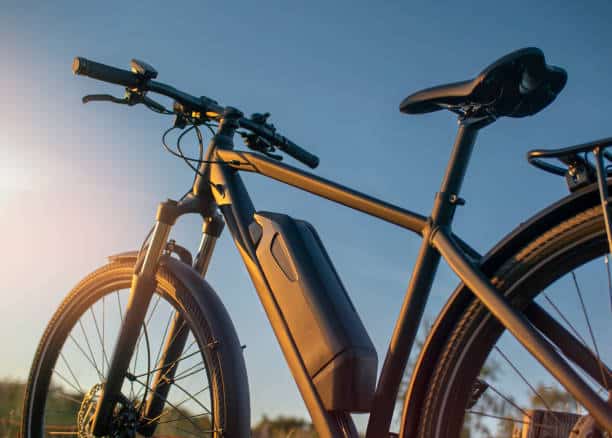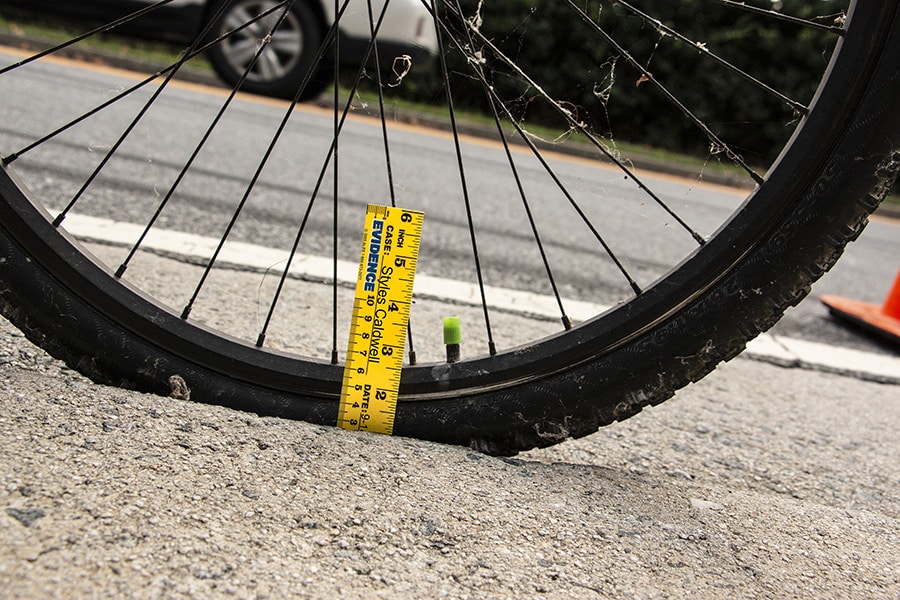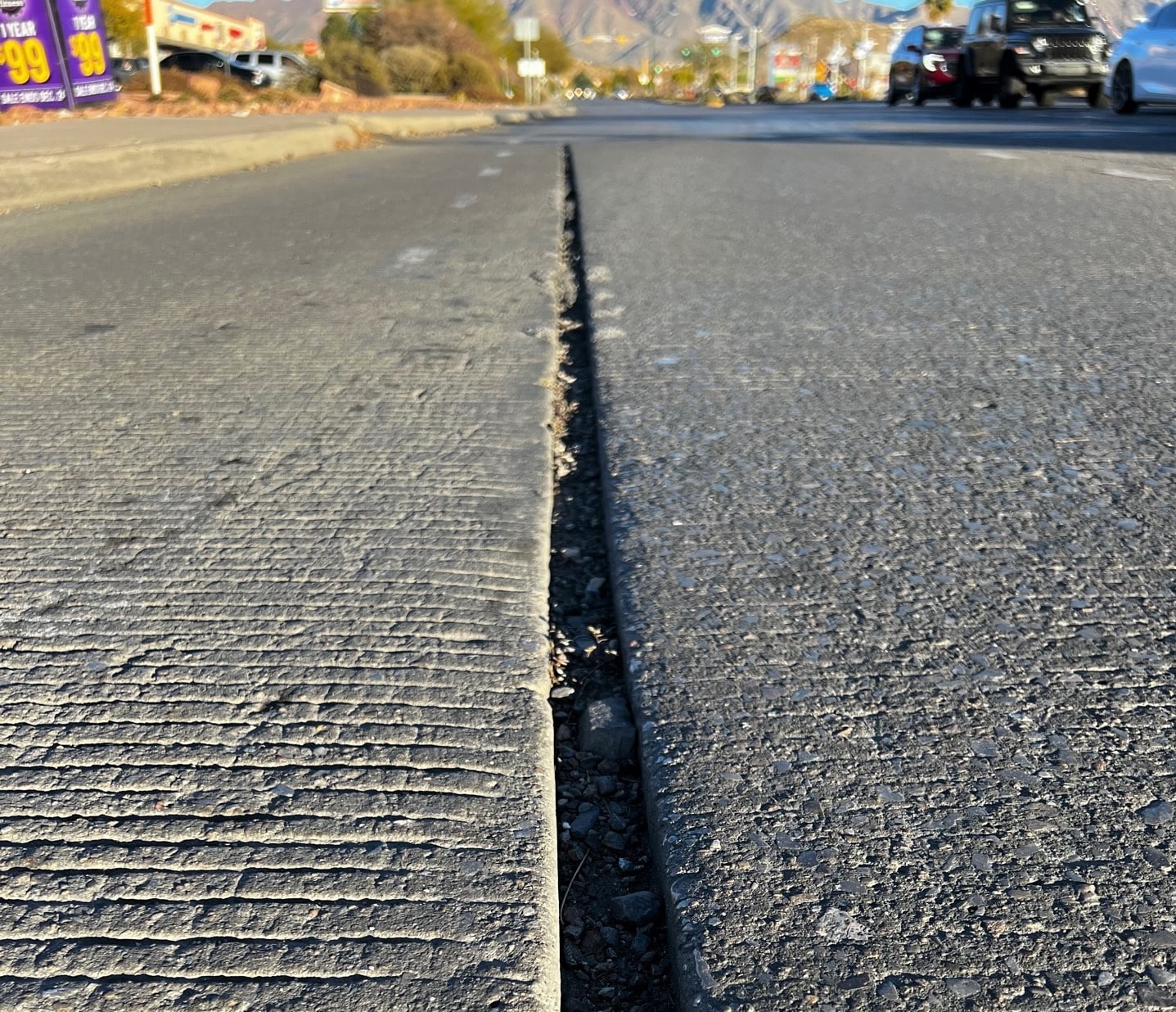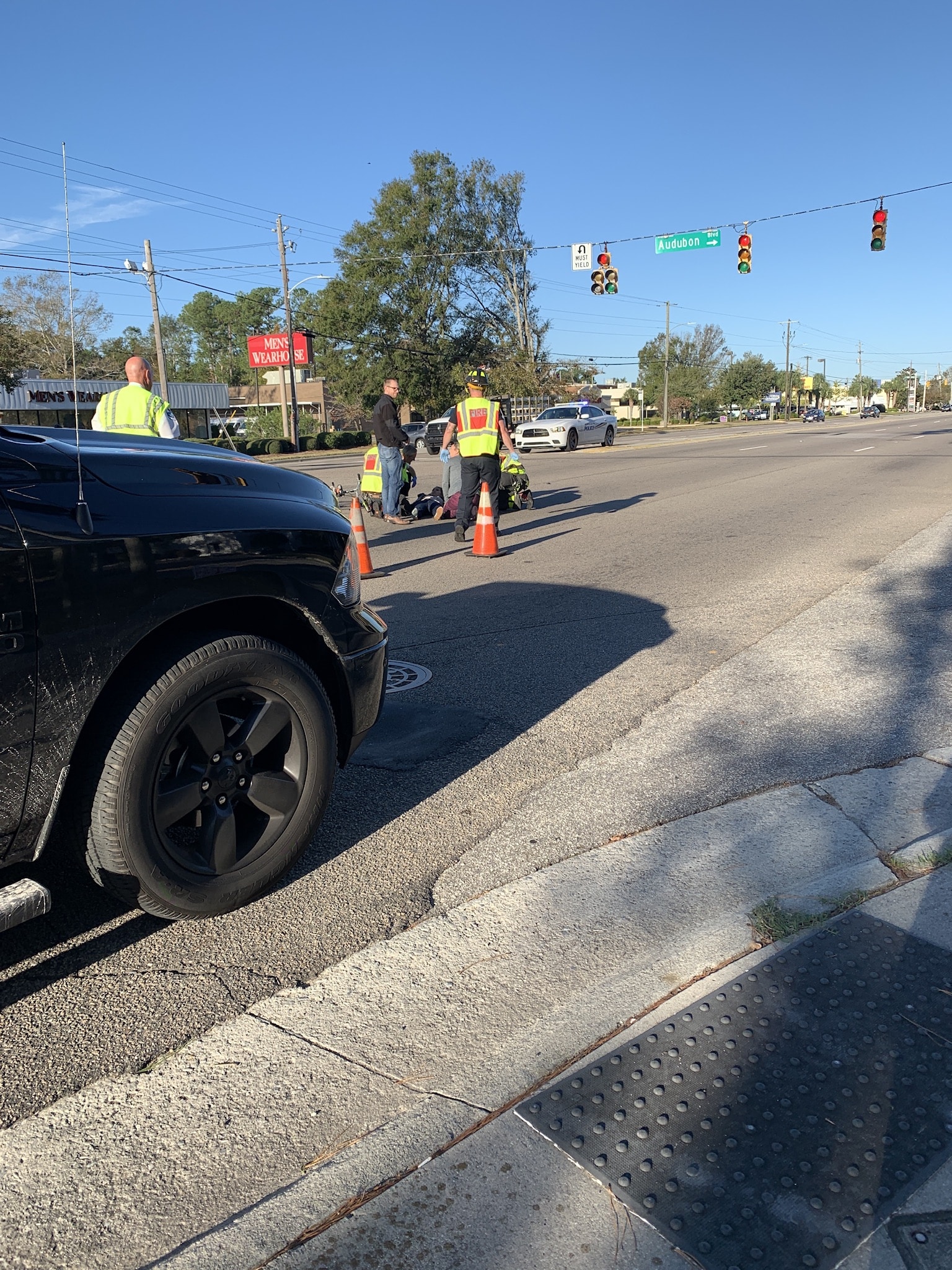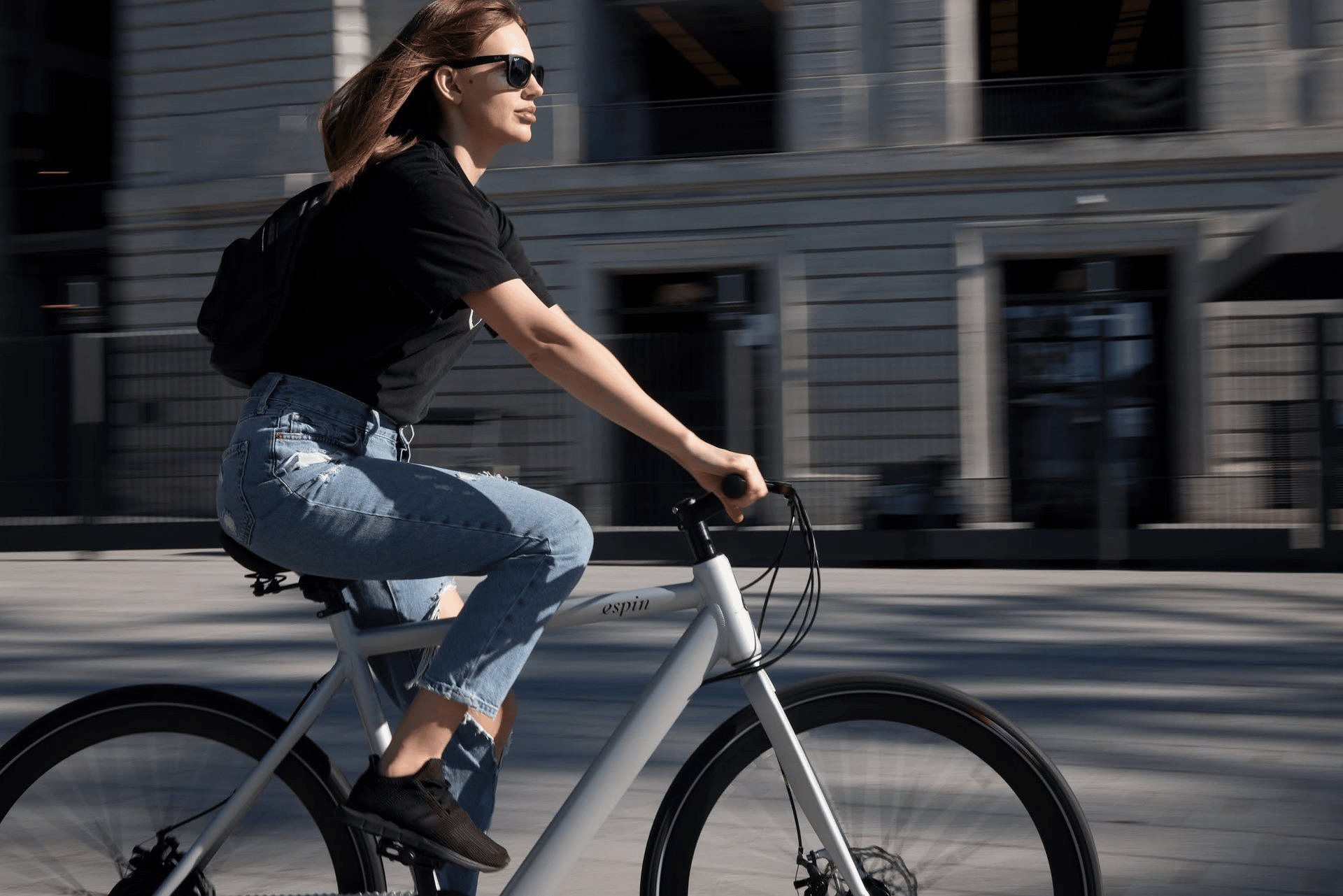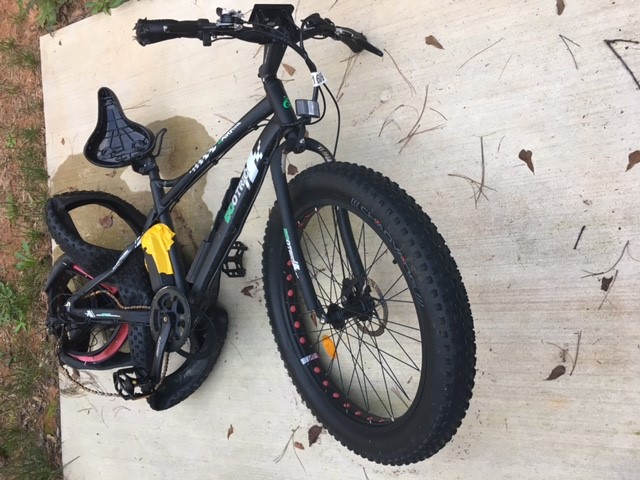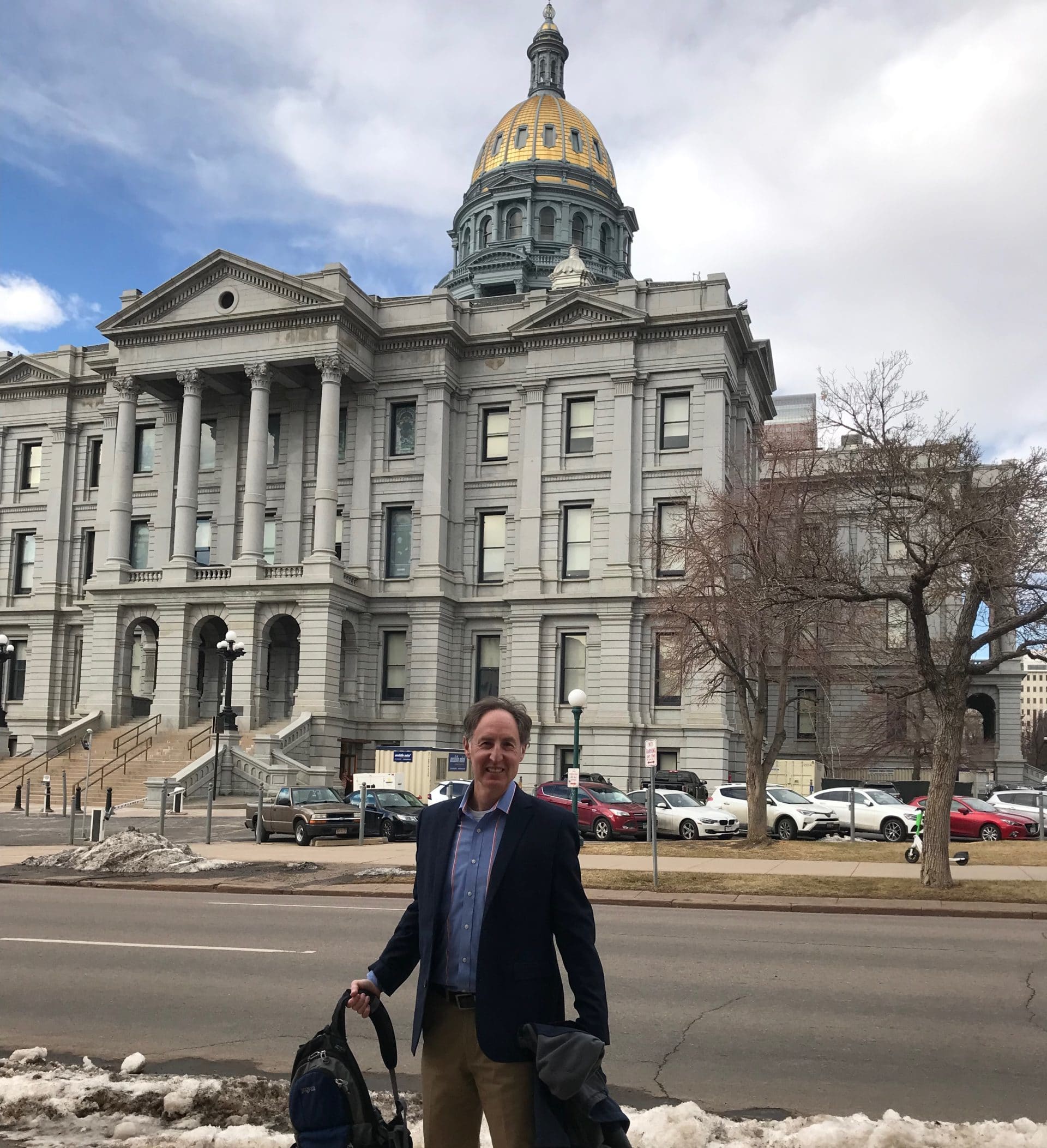Interview of TdF photographer (and Bike Law Louisiana client) Chris Graythen
It’s Tour de France time. I follow the racing daily through the footage on TV feed and still photos. But I hadn’t ever considered what’s happening on the other side of the camera lens. Like, what actually goes into snapping these pictures that we see documenting the Tour’s happenings?
I started to care more about this – and only by chance – after meeting a client named Chris Graythen. During our first meeting, Chris tells me about riding his bike in New Orleans when he was hit. The driver’s insurance company blamed Chris for the crash, which is why he needed legal help. I ask Chris about his broken collarbone and how it’s affecting his daily activities. He responds that he’s getting by, but he’s worried about it affecting his job. When I ask him what he does for a living, he tells me that he’s a photojournalist who covers events like the Tour de France. Chris explains the physical demands of hanging off a motorcycle for weeks in France to capture some of the best shots we see from the race. At that point, I realized that I knew very little about the process of how these picturesque images are brought to us. It becomes evident that there’s an unseen amount of effort, skill, coordination, and sacrifice that goes into literally every shot of the race.
Fortunately, Chris has healed from his injuries and we successfully wrapped up his case. He and I grew to be friends through this process, and I told him that I wanted to get a full flavor of his behind-the-scenes race action. I sat down with him last week before he left for France. Here’s what I learned from him over guacamole and a beer at Juan’s Flying Burrito.
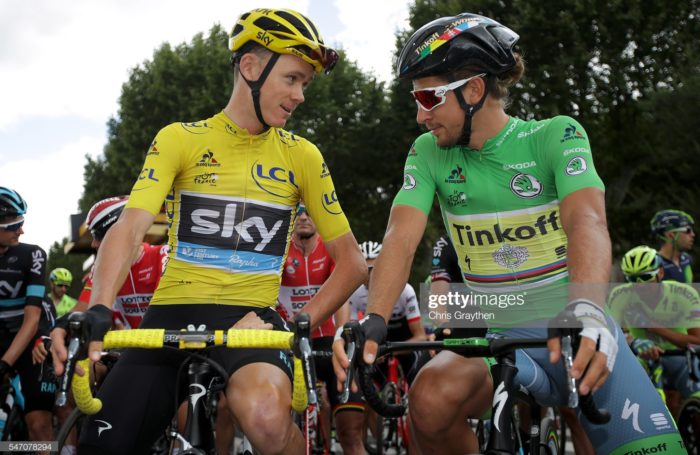
CT: So, Chris, are you a cycling fan?
Chris: If you’re shooting the Tour de France, you really need to be a fan at heart and have institutional knowledge of the sport. We’re editorially covering the story of the race first, but we’re also contracted to shoot for teams, riders, and product vendors since they’re relying on us for the shots they post daily on social media. For example, I have to know things like which Sky riders (now Team Ineos) wear Oakleys. But pretty much everyone involved with the Tour has some interest in cycling. My interest goes back to my days at LSU when I managed the Bicycle Shop in Baton Rouge, and really before that watching Greg LeMond and Lance on TV. And now I get to ride alongside the peloton capturing these guys fighting each other on every stage.
CT: Good for you. I’ll be watching from my desk and sofa. How did you get into photography anyway?
Chris: I come from a family of photographers and journalists. My uncle Bill Haber was an AP photographer for 40+ years. My great uncle Bob Roesler was with the Times-Picayune sports for over 45 years as the executive sports editor. They both told me not to expect to make any real money in this industry. You have to do this because you love it. Around 2002, I came out of college and landed a job at Lakeside Camera. I started shooting for the Times-Pic and stayed in town through Hurricane Katrina. My photos were suddenly on the front cover of the Wall Street Journal, New York Times, and USA Today. I had been freelancing for Getty Images and was hired full time in 2007. I’ve been with them ever since. (Note: Getty currently has over 120k of Chris’s images on its site).
CT: I know that you shoot all sorts of sporting events. What’s most different about photographing the Tour?
Chris: With the Tour, you’re part of the race. You can affect the outcome. In Formula 1, Indy Car, the Olympics, or really any other sport, I’m off to the side and out of the way. With the Tour, you’re literally part of the event and have to respect that closeness. For instance, I tape my lenses onto my cameras so that they won’t come loose and fall into the pack. I also act as a second set of eyes for my moto pilot by letting him know how close we are to the riders next to us.
CT: I’d imagine that it’s competitive to get the Tour assignment from Getty.
Chris: Yes. It helps to know the language [French]. In the race, there are constant updates coming over the radio on breakaways, time gaps, incidents, and whatever else is happening at that exact moment. The updates come in French first, with an English translation to follow. Sometimes the English translation lags or doesn’t come at all depending on what sort of immediate news is occurring. So, knowing French is essential to getting where the action is happening.
CT: Impossible n’est pas français.
Chris: It might be a stretch to say I’m fluent, but I’m conversational.
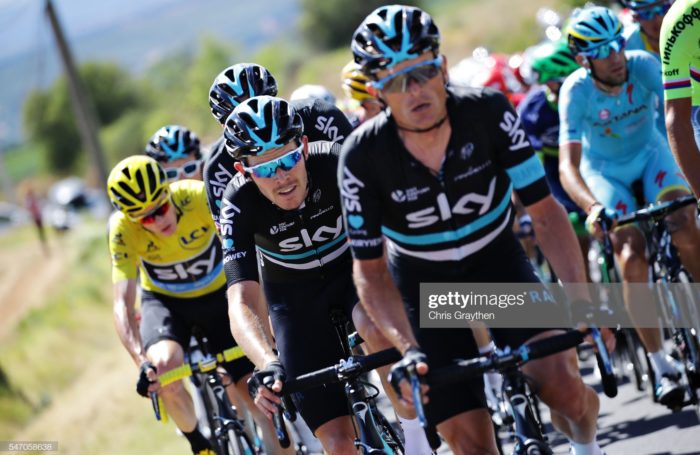
CT: So, you’re holding onto the back of a motorcycle driven by some guy for thousands of miles. How well do you know your moto pilot?
Chris: Pretty good at this point. We’re responsible for showing up with our own motorcycles and pilots at the Tour. ASO (Tour organizer) gives us a slot and we hire a private contractor to drive us. This is different from races in the U.S., like at the Tour of California where the race hires the moto and assigns us to one. At the TdF, we’re responsible for the safe operation of our motorcycle and following protocol, so it’s much smoother if you know your pilot.
CT: Can you ride anywhere you want next to the peloton? How is the chaos organized?
Chris: No no no. There are strict protocols. Cars stay on the right, motorcycles on the left. The television feed motos get priority – there’s one for the breakaway, another for the front of the peloton, and one for the back of the peloton. There’s also two helicopters and another four motorcycle photographers along the road capturing the “pretty” shots for TV. But for passing in the peloton, there’s a very specific pattern. We ride up to the back of the peloton and get a head nod of permission from the rear regulaire, who’s also on a moto, to pass the peloton. Of course, there’s a tiny width of space for us to actually ride by the pack, which can be dicey. We’ll make it to the front of the pack and check in with the front regulaire. Once acknowledged, this regulaire will grant permission to us to circulate through the peloton to capture shots.
CT: Any memories that stand out from last year’s Tour?
Chris: I remember during the cobblestone stage outside of Roubaix, we needed to get up the road and couldn’t get past the riders. We didn’t have many options, so my pilot turned off the race route and took us through a grassy field. We were going literally 100 through high grass to get to the next sector for some shots. I remember hanging on for my life.
CT: 100 kph?
Chris: 100 mph.
CT: Are you typically holding on with one hand and shooting with one hand?
Chris: Um, no. You hold on by squeezing with your legs. You need both hands for great shots. I’m not strapped on. I’m forward-facing but sideways or turned around.
CT: What equipment are you using?
Chris: I have two cameras (Canon EOS-1D X Mark II) with me at all times on the bike – a wide angle and a zoom lens. I also have two spares in my luggage in case something breaks, since I probably can’t replace a camera or lens in a remote area of France. For my clothing, I have to pack for all four seasons in a day. You have to wear long pants on the moto, and I wear a moto jacket just in case we go down. I also pack rain gear for the cameras. You have to be ready for anything.
CT: I’m guessing that four cameras + lenses and your other equipment isn’t cheap?
Chris: Probably about $80k.
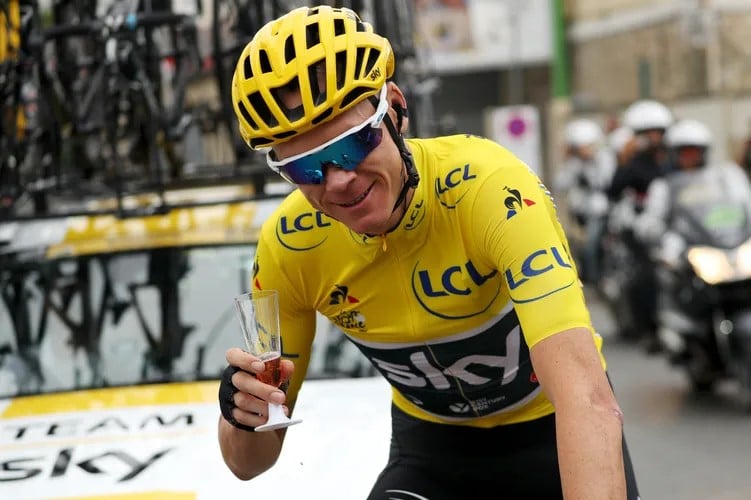
CT: Are you decent at packing?
Chris: I can fit two weeks of clothes in one duffle bag.
CT: Any other memories from last year?
Chris: Our Getty team travels with Team Quick-Step, so we’re typically staying with them. When Julian Alaphilippe won Stage 10 last year, I was with the team for the celebration that night. Julian was pouring champagne for everyone and it was amazing to see the emotion that comes with achieving a life goal.
CT: What’s the hardest part of your job at the Tour?
Chris: It’s so physically and mentally demanding. Over the course of the Tour, we’re typically covering twice the ground as the racers. You can’t have any lapse in concentration since you could affect the balance of the moto and then of course the race. No photographer wants to end up on YouTube for doing something noteworthy. During each stage, you’re constantly running up and down hills to get the best shots. At the finish of each stage, it’s elbows out to capture the winner rolling to a stop. You’re competing with team personnel, doping control, soigneurs, and other press to get there. This is a daily ordeal and a constant fight.
CT: Some random questions for you. Can the motorcycles descend mountains as fast as the racers?
Chris: (Laughing). No one can keep up with racers on a descent.
CT: Do you edit your own photos?
Chris: Thankfully no. I upload the untouched photos to Getty’s editing facility in Spain. They handle the photos from there.
CT: Will we start seeing drone photography in the Tour soon?
Chris: The laws in Europe are much more lax for drones compared with here. I have a drone that I can use to shoot photos, but I can’t sell them now because of the licenses needed for “commercial” drone photography. For the Tour, there may be some interference issues with the low-flying helicopters, so I’m not sure that we’ll see drones in the Tour soon.
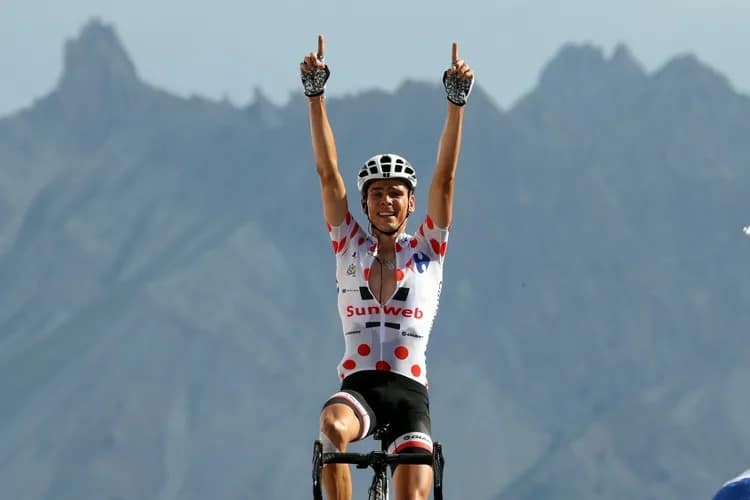
CT: Who’s your pick to win this year’s Tour?
Chris: Egan Bernal. I think this year’s route favors a climber and he’s in excellent form.
CT: Tell us about some of the other racers.
Chris: Froome is a really nice guy. Cavendish is too. I typically talk with him about watches since he’s into those. Michael Schar is a Swiss rider who I’ve talked with at length about his true passion: American muscle cars. I also like following Chad Haga’s blog deconstructing the Tour.
CT: You were hit by a careless driver, broke your collarbone, and initially blamed for the crash. We worked together to pull out a win. What do you think of lawyers now? Were you pleased with your legal representation?
Chris: Yes, Charlie – you know the answer to that. I take my Bike Law water bottles with me to the Tour and also have my Bike Law sticker on my laptop. It’s a shame that I had to meet you because of my crash, but I’m glad that we crossed paths. I was very pleased with both the effort and outcome.
CT: Thanks Chris. Be safe and see you after July.
All photo credits to Chris Graythen and Getty Images.
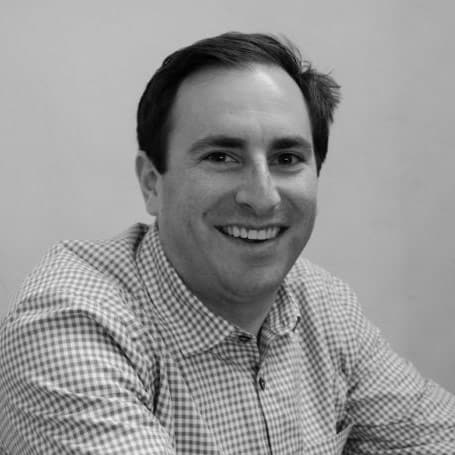
Charlie is a bicycle accident lawyer in Louisiana, Texas, and Mississippi and a member of the Bike Law Network.
Having served as the president of the Texas A&M Cycling Team, where he led the team in appearances in the U.S. Collegiate National Championships, Charlie has spent thousands of hours riding his bicycle in Texas.



